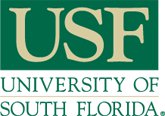Below is a summary of the abstract you submitted. Presenting author(s) is shown in bold.
If any changes need to be made, you can modify the abstract or change the authors.
You can also download a .docx version of this abstract.
If there are any problems, please email Dan at dar78@pitt.edu and he'll take care of them!
This abstract was last modified on March 30, 2025 at 10:53 a.m..

Phage Kimona was isolated in 2017 from Durban, South Africa and is the only member of cluster A19. Kimona shares the highest gene content with A7 cluster phages Sheen (56.2%) and Toro (55.8%). Kimona is 50,283bp, has a 64.4% GC content, 2 tRNA genes and 88 protein coding genes. Kimona has 43 genes with annotated functions (~50% of the genes) including: 15 structural genes; 7 membrane proteins; and 12 DNA modification/replication proteins. Kimona is a temperate phage and has several immunity genes including a tyrosine integrase, immunity repressor and excise. Cro could not be identified, but there are three HTH DNA binding proteins that could be part of the immunity genes. Finally, Kimona has a non-canonical lysis cassette with the lysin A and lysin B genes located in the 5’ end of the genome and the putative 2TMD and 1TMD holin genes downstream of the tape measure and minor tail genes. The goal of the SEA GENES programs is to clone all phage genes into the inducible expression vector, pExTra and evaluate whether the expression of the genes are cytotoxic to M. smegmatis or serve a role in immunity by providing defense to M. smegmatis from phage infection. Previous full genomic screens from the GENES consortium have shown that the expressed gene products show mild, moderate and severe toxicity and that typically ~30% of the genes in a phage genome produce a toxic outcome. Currently, 47 of the Kimona genes have been evaluated for cytotoxicity and defense. None of the tested gene products show a defense phenotype. There are 7 gene products that show moderate to severe toxicity (15%). Only one of the toxic genes is of no known function (47) and it encodes a small 67aa protein with no defined domains. The other toxic products encode: endonuclease VII (gene 57); an HTH protein (gene 46); phosphoribosyl transferase (gene 62); SprT-like protease (gene 80); a 100aa protein predicted to be secreted (gene 76); and tyrosine integrase (gene 30). HTH proteins from phage Girr (gp55) and Waterfoul (gp38, gp71) and the integrase from Girr (gp44) have been reported to be toxic. However, the other Kimona toxic proteins represent new proteins not reported previously. In addition, several structural proteins have been found to show mild to moderate toxicity from phages Girr, Hammy and Waterfoul, yet in Kimona, the major capsid, head-to-tail stopper, hear-to-tail adaptor, portal protein and several minor tails, all present with a non-cytotoxic phenotype. The putative holin proteins (gp26 and gp27) also did no show cytotoxicity. This data highlights the importance of the genome-wide screens for uncovering unique and unexpected outcomes for proteins that are annotated with the same function, but are not in the same pham and show <30% amino acid identity. Future research will evaluate the remaining 41 genes and utilize a 2-hyvrid approach to determine if the highly toxic genes interact with important M. smegmatis proteins to confer the toxic effect.
